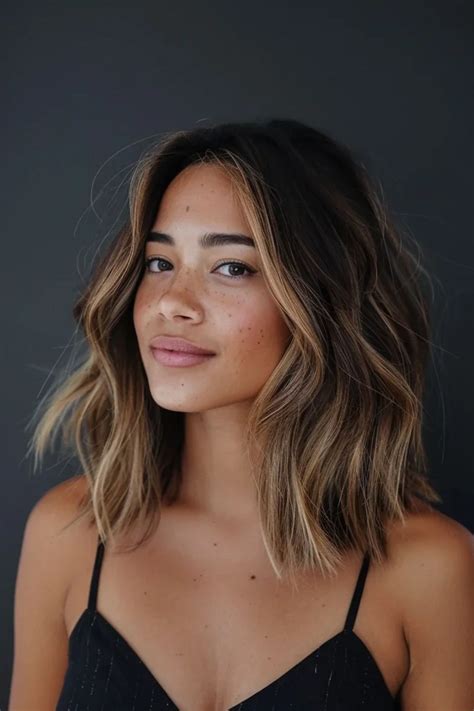222 Hair Color: A Comprehensive Guide to Shades, Trends, and Techniques
Introduction
Hair color #2 has captivated individuals worldwide, transcending cultural boundaries and evolving with societal norms. Whether you seek a subtle enhancement or a transformative look, this comprehensive guide will empower you with everything you need to know about shade #2 hair color.

#2 Hair Color: Understanding the Shade
The #2 hair color, also known as “dark blonde” or “very dark blonde,” is characterized by its rich, warm undertones. It falls between level 1 (black) and level 3 (dark brown) on the hair color chart, creating a natural-looking, low-maintenance shade.
#2 Hair Color Trends
The #2 hair color has been a popular choice for centuries, and its resurgence in recent years is no surprise. It effortlessly blends with a wide range of skin tones and complements various hair textures.
Balayage #2 Hair Color
This technique creates a subtle, sun-kissed effect by strategically placing highlights throughout the hair. Balayage #2 hair color adds dimension and movement to darker hair without the need for full highlights.
Ombre #2 Hair Color
Ombre #2 hair color features a gradual transition from a darker root color to a lighter #2 shade towards the ends. This technique creates a chic and modern look that requires minimal upkeep.
Root Shadowing #2 Hair Color
Root shadowing involves adding a darker shade to the roots, creating a natural-looking transition to #2 hair color. This technique conceals gray hairs and adds depth to the overall look.
Choosing the Right #2 Hair Color
Selecting the perfect #2 hair color depends on several factors:
Skin Tone
- Warm undertones: Consider #2 hair colors with golden or copper undertones.
- Cool undertones: Opt for #2 hair colors with ash or cool beige undertones.
- Neutral undertones: You can experiment with both warm and cool #2 hair colors.
Eye Color
- Brown eyes: #2 hair colors with warm undertones enhance brown eyes.
- Blue eyes: #2 hair colors with cool undertones complement blue eyes.
- Green eyes: #2 hair colors with golden or amber undertones highlight green eyes.
Hair Texture
- Fine hair: #2 hair color adds volume and fullness to fine hair.
- Thick hair: #2 hair color can balance out the heaviness of thick hair.
- Curly hair: #2 hair color defines curls and enhances their texture.
Achieving #2 Hair Color
Transforming your hair to #2 color requires professional expertise. Here are the key steps:
- Color Consultation: Discuss your desired shade and underlying hair condition with a professional colorist.
- Pre-lightening: For darker hair, pre-lightening is necessary to achieve #2 color.
- Toning: After pre-lightening, toning neutralizes brassiness and adds desired undertones.
- Application: The colorist applies the #2 hair color evenly throughout your hair.
- Processing Time: The processing time varies depending on your hair texture and the desired intensity of the color.
Maintaining #2 Hair Color
- Use color-safe shampoo and conditioner.
- Minimize heat styling.
- Get regular trims to remove split ends.
- Touch up your roots every 4-6 weeks.
Tips and Tricks
- Add highlights: Subtle honey blonde highlights enhance the warmth of #2 hair color.
- Experiment with hair accessories: Statement hairpins and headbands complement #2 hair color and add a touch of glamour.
- Embrace your natural roots: Let your roots grow out slightly to create a chic, low-maintenance look.
Common Mistakes to Avoid
- Over-bleaching: Avoid excessive pre-lightening, as it can damage your hair and make it prone to breakage.
- Brassiness: Choose tones with cool undertones to prevent unwanted brassiness.
- Using the wrong products: Use products specifically designed for color-treated hair to avoid fading and damage.
Frequently Asked Questions
Q: Is #2 hair color right for me?
A: #2 hair color suits a wide range of skin tones and hair textures. Consult with a professional colorist to determine if it is the right choice for you.
Q: How long will it take to achieve #2 hair color?
A: The time depends on your starting hair color and the desired intensity. For darker hair, multiple sessions may be necessary.
Q: How often should I retouch my #2 hair color?
A: Touch-ups are recommended every 4-6 weeks to maintain the desired shade and prevent fading.
Conclusion
Tables
Table 1: #2 Hair Color on Different Skin Tones
| Skin Tone | Ideal #2 Hair Color Undertones |
|---|---|
| Warm | Golden, copper |
| Cool | Ash, cool beige |
| Neutral | Both warm and cool |
Table 2: #2 Hair Color for Different Eye Colors
| Eye Color | Complementary #2 Hair Color Undertones |
|---|---|
| Brown | Warm |
| Blue | Cool |
| Green | Golden, amber |
Table 3: #2 Hair Color for Different Hair Textures
| Hair Texture | Benefits of #2 Hair Color |
|---|---|
| Fine | Adds volume and fullness |
| Thick | Balances out heaviness |
| Curly | Defines curls and enhances texture |
Table 4: Popular #2 Hair Color Techniques
| Technique | Description |
|---|---|
| Balayage | Subtle, sun-kissed highlights |
| Ombre | Gradual transition from dark roots to light ends |
| Root Shadowing | Adds depth and conceals gray hairs |
